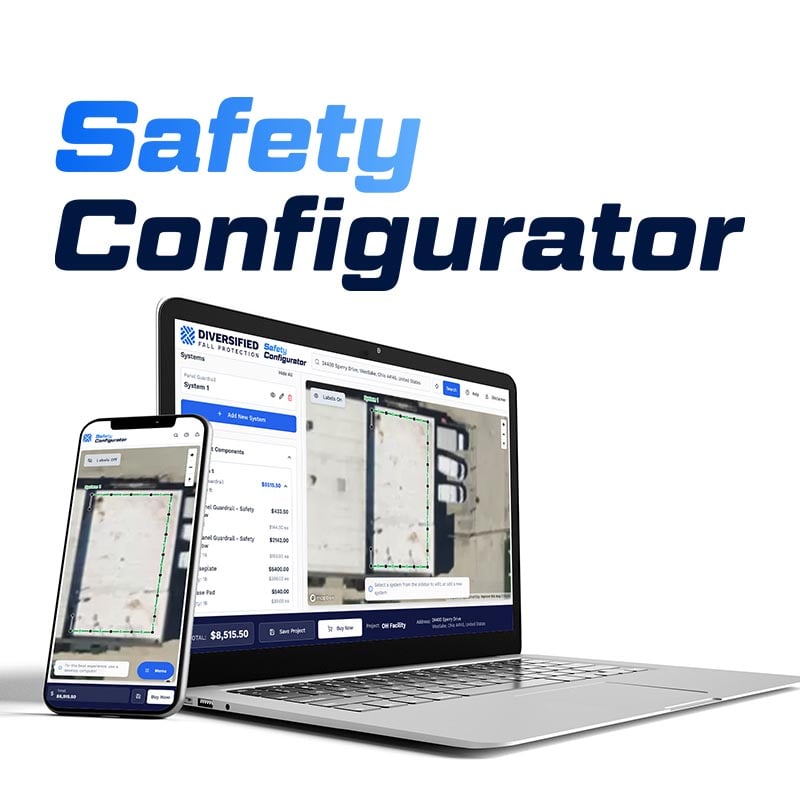Planning for Falls and Rescue: Dialing 911 Is Not a Rescue Plan
Having the proper fall protection systems in place is critical to maintaining employee safety, but employers that don’t focus equal attention on developing fall rescue and response protocols jeopardize worker safety. If your rescue plan is calling 911, it is time to start formulating an action plan before disaster strikes. Remember, successfully implemented rescue plans are by products of planning and practice. Taking the time to think through your company’s rescue plans prior to an actual accident gives your employees the best chances of surviving a potentially life threatening situation.
Rescue Options
When employees work at heights, there are three basic rescue options. Just as we often discuss the hierarchy of fall protection as a progression from simplest to most complex systems, the same decision-making hierarchy exists applies to descent and rescue.
Self-Rescue/Assisted Self-Rescue
The vast majority of fallen workers can perform self-rescue when the proper systems and training are in place. In these instances, the worker’s self-retracting lifeline engages within two feet of a fall, so rescue is simply a matter of climbing back to the level where the fall originated. Some specialized SRL’s can even automatically lower a worker to safety. Assisted self-rescue is just what the name implies: self-rescue with minimal assistance from another employee. Remember to bag and tag all equipment components and include a note with the date, activity, and date/time of the fall. Logging the incident and performing an inspection of all PPE by a qualified person are vital steps to ensure OSHA compliance.
Mechanical Rescue
In instances where self-rescue is not possible, your next option is a mechanically aided approach. Examples here include the use of air hoist lines, aerial lifts, personnel baskets on cranes, and scissor lifts. The response team will need to assess the location of the accident and the condition of the fallen worker to formulate the most appropriate form of action. Again, all PPE should be bagged, tagged, and inspected by a qualified person to ensure safety.
Pick-Off Rescue
During a pick-off maneuver, a trained responder is lowered into position using a rope to execute the rescue. Pick-off rescues are the most complex of the available options and used when all others means of rescue are exhausted.
Rescue Routine
In the event of an actual fall, it is important to follow a carefully orchestrated and practiced response. OSHA regulations require employers to facilitate a prompt rescue of the worker(s) in the event of a fall. ANSI guidelines call for a maximum six-minute response window to mitigate the risk of unconsciousness or death due to prolonged suspension in a body harness. To prevent suspension trauma, encourage movement legs to restore proper blood flow. It is also important to monitor the victim for fainting, nausea, breathlessness, dizziness, sweating, low heart rate, low blood pressure, paleness or loss of vision. If any of these symptoms are present, the accident victim may be suffering from complications associated with suspension trauma and require immediate medical attention. Once the worker is transported to safe ground, assess the victim’s medical requirements (e.g., basic first aid, hospitalization).
Documentation Requirements
OSHA 29 CFR 1904 requires documentation for work-related incidents in the following instances:
- Death
- Accidents resulting in lost days from work
- Restricted work or transfer to another job
- Medical treatment beyond first aid
- Loss of consciousness
- Significant injury or illness diagnosed by a physician or other licensed healthcare professional
Important Note: Work-related accident resulting in the death of an employee or the hospitalization of three or more employees must be reported directly to OSHA.
System Inspection Requirements
As previously mentioned, all PPE items and components must be removed from use and inspected by a qualified person following an accident. In addition, fixed fall protection systems and their components must be inspected to check for signs of damage. If the system sustained damage during the fall, it should be immediately removed from service and repaired by a fall protection company.
Parting Thoughts
Employer attitudes toward safety and fall protection and safety have vastly improved in recent years, but we need to exercise the same level of vigilance where rescue and response are concerned. If your company does not already have a plan, it is time to start developing a response protocol, and if you have a well-constructed plan, take time to practice its execution. To learn more about rescue and response approaches for fall-related accidents, contact the safety experts at Diversified Fall Protection for further assistance.
Schedule an assessment with Diversified Fall Protection
Contact Us to request a fall safety review

b-1.jpg?width=1368&height=1340&name=Rail%20(175)b-1.jpg)

